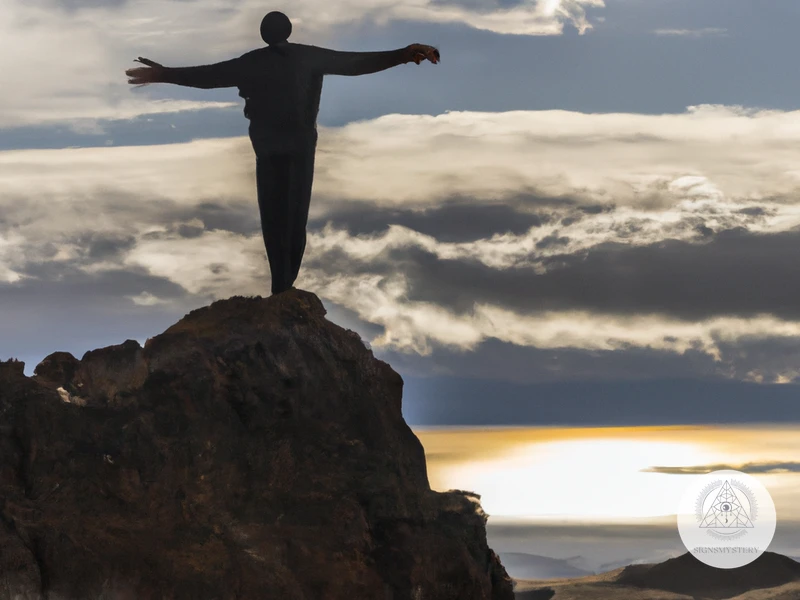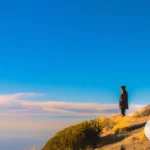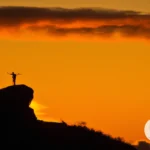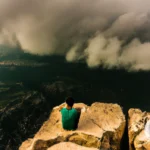Embarking on a Vision Quest can be a life-changing experience, but it’s important to have a thorough understanding of what it entails before diving in. From the preparation process to the solo quest and returning to the community, there are a series of steps involved in a typical vision quest. This article will explore the meaning and significance of vision quests, the different types, and how to prepare for one. We will also walk through each step in the process and what to expect during a vision quest. Whether you are considering a vision quest for personal reasons, spiritual growth, or simply out of curiosity, this guide will provide you with the information you need to make an informed decision.
What is a Vision Quest?
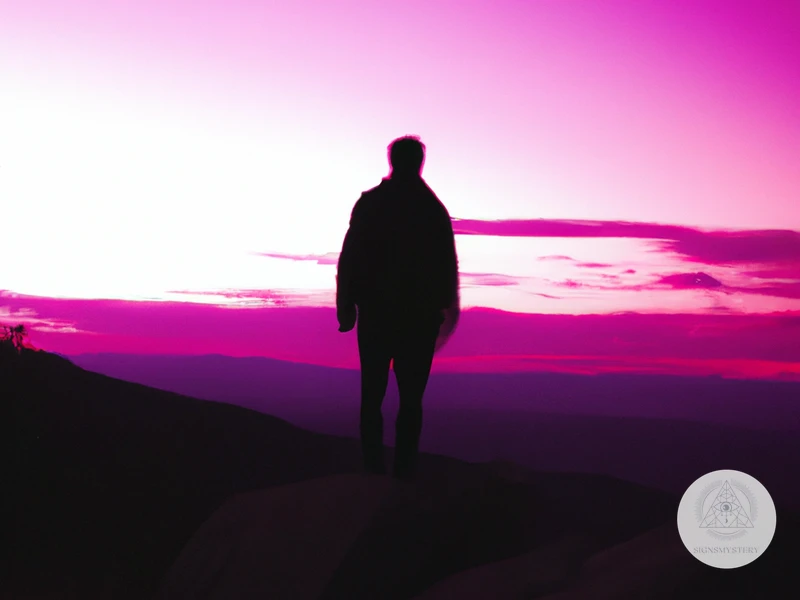
A Vision Quest is a powerful and sacred Native American ritual that involves spending time alone in nature, typically without food or water, to seek spiritual guidance and purpose. During this introspective journey, the individual seeks a vision or sign from the spirit world, which can guide them in their path. The Vision Quest is a rigorous experience that challenges one’s physical, emotional and spiritual limits. While the traditional process may vary depending on the tribe and the individual, the core elements of the Vision Quest remain the same. To embark on a Vision Quest, one must prepare themselves mentally, emotionally, and physically to endure the challenging and rewarding quest ahead. The process involves several steps, including a pre-quest ceremony, separation from the community, a solo quest, return to the community, sharing the experience, and integrating the insight gained on the quest back into their daily life. To learn more about the meaning and significance of vision quests or to get tips for preparing for one, check out these links: vision-quests-shamanism, prepare-for-vision-quest, and types-of-vision-quests-choose-one.
Meaning and Significance of Vision Quests
Vision Quests have been a fundamental part of spiritual and personal growth in many cultures around the world for centuries. Vision Quests offer a unique opportunity for individuals to connect with their inner selves, deepen their understanding of the world around them, and transform their lives.
The term “Vision Quest” does not have a single, universal meaning, as it varies from culture to culture. However, the general interpretation is that it involves a period of isolation in which the seeker fasts, meditates, and connects with nature to receive guidance and direction from the spirits or the divine.
The significance of Vision Quests lies in their ability to provide a space for self-discovery, reflection, and renewal. By separating oneself from the distractions of daily life, an individual can focus on their intention, cultivate a sense of purpose, and access their inner wisdom. Finding answers to personal questions and struggles can help bring clarity and identify areas of growth.
In Native American cultures, a Vision Quest often includes a connection with the animal spirit guides. These guides can act as messengers, conveying messages or wisdom from the spirit realm. For example, the appearance of a hawk may represent the need to reflect on a specific situation and gain a broader perspective, or the sighting of a wolf may symbolize the importance of leadership and working in a team.
Vision Quests have deep spiritual meaning and can have a profound impact on one’s life. By providing a safe space for connection with nature, meditation, and fasting, individuals can gain insight into their challenges, explore personal beliefs, define intentions, and experience spiritual transformation. To learn more about animal spirit guides in Vision Quests, visit the article “Animal Spirit Guides Meanings in Vision Quests”. To discover what happens after a Vision Quest, see “After Vision Quest”. Additionally, check out the article “Debunking Vision Quest Myths” to have a better understanding of the practice.
Types of Vision Quests
There are several different types of vision quests that are practiced by different cultures and communities. Each type of vision quest has its own unique purpose and focus. Here are some of the most common types of vision quests:
- Solo Vision Quest: This is the classic type of vision quest that involves an individual going on a journey into the wilderness to seek guidance, insight, and understanding.
- Community Vision Quest: This type of vision quest involves a group of people going on a collective journey of self-discovery and transformation. This is often done as a way to build community and strengthen relationships.
- Medicine Wheel Vision Quest: This type of vision quest involves working with the symbolism and teachings of the Medicine Wheel. Participants will often visit each of the four directions (north, south, east, and west) to gain insights into themselves and their lives.
- Sweat Lodge Vision Quest: This type of vision quest involves spending time in a sweat lodge, which is a small, enclosed space that is heated with hot rocks. Participants will experience intense heat and physical discomfort as a way to purify themselves and connect with the spiritual realm.
- Vision Fast: This type of vision quest involves fasting for a period of time (usually several days) as a way to connect with the divine and gain clarity on one’s life path and purpose.
It’s important to note that each type of vision quest may involve different rituals, ceremonies, and practices depending on the culture or tradition that it comes from. However, the underlying purpose of each vision quest is to seek out guidance, insight, and transformation through a journey into the unknown.
Preparing for a Vision Quest
Preparing for a Vision Quest is crucial for the success of the quest as it helps to lay the foundation for a transformative experience. Below are some steps one can take when preparing for a Vision Quest:
- Consult with an experienced guide: It is highly recommended to consult with a guide or mentor who has experience with Vision Quests. They can offer guidance and support in preparing mentally, emotionally, and spiritually for the quest.
- Choose an appropriate location: Choosing a location that is isolated and natural, such as a forest or a mountain, is important for a Vision Quest. This allows one to be fully immersed in nature and can aid in achieving a transcendent experience.
- Engage in fasting and purification: Fasting and purification are integral components of a Vision Quest. This includes abstaining from alcohol, drugs, and processed foods, as well as engaging in rituals such as sweating, smudging, or baths to purify the body and mind.
- Create a clear intention: It is important to set a clear intention for the quest. This can involve reflecting on what you hope to gain from the experience, what questions you seek answers to, or what changes you want to make in your life.
- Practice meditation and mindfulness: Practicing meditation and mindfulness can help calm the mind and cultivate inner awareness. This can be especially helpful in the solo quest portion of the Vision Quest, where the lack of external distractions can be challenging.
- Engage in physical preparation: Physical preparation can involve hiking, yoga, or other exercises to build physical endurance. This can aid in withstanding the challenges of the solo quest and help to connect with nature.
By taking the time to prepare properly for a Vision Quest, one can enhance their chances of having a transformative experience that can lead to growth, self-discovery, and clarity.
The Process of a Vision Quest
A Vision Quest involves a series of steps or processes. The first step is the Pre-Quest Ceremony which usually involves a sweat lodge or a ritual bath to help in the cleansing of the body, mind, and spirit. The second step is Separation from the Community which may involve a journey or a hike to the actual vision quest location. This step is important as it signifies the beginning of the solo quest period. The third step is the Solo Quest, a period of time of usually 1-4 days spent in solitude with no food or water. During this time, the individual is expected to seek guidance or direction from their inner self or the unseen realm. The fourth step is the Return to Community in which the participant returns to the community with their insights and vision. The fifth step is Sharing the Experience whereby the participant shares their vision and experiences with a witness or council. The final step is the Integration and Follow-Up which involves embodying the vision and insights received during the solo quest into daily life.
Step 1: Pre-Quest Ceremony
Before embarking on a Vision Quest, participants engage in a Pre-Quest Ceremony that marks the beginning of their spiritual journey. This is a time to set intentions and create a sacred space for the journey ahead.
The ceremony typically involves a purification ritual, such as smudging or sweat lodge, to cleanse the mind, body, and spirit. Participants may also make offerings to the spirits and ancestors, asking for protection, guidance, and blessings.
The offering may be tobacco, grains, or other natural items, and it is usually an important part of the ceremony. Another key aspect of the Pre-Quest Ceremony is the creation of an altar, which is a sacred space used for meditation, prayer, and contemplation.
In Native American traditions, the altar is often decorated with symbols of the four directions and elements, as well as personal items that hold spiritual significance. The participants may also have a chance to meet the guides and mentors who will support them as they embark on their Vision Quest.
The Pre-Quest Ceremony is an essential part of the Vision Quest journey as it sets the tone for the entire experience. It helps participants clear their minds, focus their intentions, and connect with the spiritual realm. By engaging in this ritual, participants show respect and honor to the traditions and practices that have been passed down for generations.
Step 2: Separation from the Community
Step 2: Separation from the Community
Separation from the community is a crucial step in the vision quest process. This step involves leaving behind the external world and entering into a state of solitude, which is necessary for inner reflection, introspection, and spiritual connection.
The pre-quest ceremony prepares the participants for the separation. They are often given ceremonial dress, objects, food, and water. These items are meant to sustain the participants during their time in the wilderness.
Participants are then led to their respective vision quest sites by a guide. This is usually done in silence or with minimal verbal communication. It is important for participants to be completely present during this journey, as it allows them to connect with the land and nature.
Once participants reach their vision quest site, they set up camp by building a rudimentary shelter or using a pre-existing structure. They also create a prayer tie, which is a piece of cloth tied to a tree or another natural object, representing their intention for the quest.
The separation then begins, and participants are left alone in solitude for a period of three to four days. During this time, they do not have contact with the outside world and must rely on their own resources to survive. Participants fast or consume minimal food and water, use no electronics, and spend their days in meditation, prayer, and contemplation.
The period of solitude is a time of deep introspection. Participants confront their fears, doubts, and insecurities, and seek guidance, clarity, and insight. They may experience a range of emotions, from fear and anxiety to peace and joy. They may also encounter a range of physical experiences, such as hunger, thirst, or fatigue.
The separation phase of the vision quest is an essential part of the process. It is a time of struggle, growth, and transformation, where participants face their deepest fears and emerge with a greater understanding of their purpose and path.
Step 3: Solo Quest
This is the most crucial and demanding part of the vision quest as it involves a complete disconnection from the outside world. Participants move to remote locations, usually in the wilderness, and spend several days alone with no food, water, or shelter. During this time, they rely only on themselves and their connection to the surrounding environment to provide everything they need to survive.
The solo quest can last from one to four days, during which participants aim to gain clarity and insights about their lives, purpose, and direction. They must face their fears, doubts, and uncertainties. They need to confront their personal demons and integrate suppressed emotions and memories.
The solo quest can be an excruciating and transformative test of mental, emotional, and physical endurance. Participants may face hunger, thirst, heat, cold, rain, or other harsh elements. They may encounter wild animals, insects, or poisonous plants. They may experience boredom, loneliness, or despair.
However, the conditions of the solo quest are intentionally designed to strip away the distractions, conveniences, and comforts of modern life and to amplify the connection to the natural world, the inner self, and the spiritual realm. Without the ongoing interference of technology, social norms, and daily routines, participants can tap into their intuition, creativity, and intuition.
They can clear their minds and open their hearts to messages and visions from the divine, the spirit guide, the ancestors, or the universe. They can engage in mindful meditation, visualizations, or prayers. They can explore their identity, purpose, and values.
The solo quest culminates with participants returning to the base camp where they receive support, guidance, and debriefing from the facilitators and the community members. They may share their experiences, insights, and revelations with others who have gone through similar journeys. They may receive validation, feedback, or interpretations of their visions and dreams. They may feel a profound sense of acceptance, belonging, and interconnectedness.
The solo quest is a challenging, yet rewarding, phase of the vision quest that can provide a life-changing experience of personal growth, spiritual awakening, and self-discovery.
Step 4: Return to Community
After spending several days alone in the wilderness, the vision quester returns to their community. The return is an equally important part of the quest as the actual solo time. The quester returns with a new sense of self and purpose, and it is important for the community to recognize and honor that change.
During the return, the quester may participate in a welcoming ceremony, which can vary depending on the culture or tradition followed. This ceremony often involves a purification or cleansing ritual, such as smudging with sage or other herbs. In some cultures, the quester is also given a new name to reflect their transformation and the vision they received during their solo time.
Sharing the Experience
After the welcoming ceremony, the quester will generally share their experience with the community, often in the form of a council circle. In this setting, the quester has the opportunity to express their insights, experiences, and lessons learned during their time alone in the wilderness.
It is important for the community to listen with an open mind and heart, as the quester’s experience may differ greatly from their own. The sharing of stories and experiences creates a bond between the quester and the community, deepening their connection and understanding of one another.
Integration and Follow-Up
After the sharing, the quester enters a phase of integration and follow-up. The community may offer support, guidance, or additional resources to help the quester fully integrate their experience into their daily life. This can involve ongoing counseling, mentoring, or even further vision quests to continue their spiritual growth and journey.
The return to community is an important aspect of the vision quest, as it allows the quester to fully integrate their experience into their life and to share their newfound wisdom and insight with their community.
Step 5: Sharing the Experience
After completing the Vision Quest, the participant returns to the community for a sharing ceremony. This is a vital step and serves to integrate the individual’s experience with the group. During the sharing ceremony, participants have an opportunity to share their experience and insights with others. This sharing is critical, as it allows the participant to express their emotions and thoughts about the experience with others openly.
The sharing ceremony typically takes place around a fire, with each participant seated around it. It is customary to hold a talking stick, which is passed around the circle. The individual who holds the talking stick is the only one who can speak, and others listen carefully to them. This tradition ensures that everyone has a chance to express themselves and that all opinions are heard, acknowledged, and valued.
The participant shares their experience without interruption, and others listen intently. This allows them to be open, honest, and vulnerable about their journey, which helps them to process the experience. They receive feedback, guidance, and support from the community.
The sharing ceremony helps to reinforce the idea that one’s experience is not theirs alone, but it is also connected to the larger community. Sharing encourages healing, reflection, and transformation in both the participant and the community.
At the end of the ceremony, participants return the talking stick to the leader or elder who then offers some concluding words. This process marks the end of the Vision Quest, and the participant can return to daily life feeling rejuvenated, transformed, and grateful for their experience.
Sharing the experience is an essential step in a Vision Quest. It helps participants integrate their experiences into everyday life and encourages healing, reflection, and transformation. It allows participants to connect with others, the environment, and their spiritual selves, and to find meaning and purpose in their lives.
Step 6: Integration and Follow-Up
After the participant returns from the vision quest, the integration phase begins. This step is crucial for the participant to relate their visions and experiences to their day-to-day life. Integration helps the participants to make sense of their experience and apply the insights and wisdom they have gained to their life.
During this phase, the participants may have follow-up sessions with the guide or facilitator who will help them process and interpret their experiences. The guide or facilitator may encourage the participant to express their thoughts and feelings through journaling, art, or other creative expression.
The integration phase often brings up new questions that the participant may have regarding the visions they received, and the facilitator will assist in finding clarity and meaning for those questions. The participant may also receive advice on how to integrate their newfound wisdom into their everyday life.
Follow-up meetings can help participants stay on track with their newfound goals and intentions for their life. The follow-up phase may last anywhere from a few days to months, depending on the nature of the experience.
In some cases, participants may experience difficulty in integrating their experience into their daily life. They may feel disconnected or out of place with their everyday reality, or they may struggle with new emotional challenges. During this time, it is important to maintain communication with the facilitator, who can help to provide support and guidance during this transition.
The integration and follow-up phase is an essential part of the vision quest process. It helps participants maximize the benefits of their experiences and integrate their newfound wisdom into their daily lives. With the support of a guide
Subscribe to Our Newsletter
Sign up to receive the latest news and updates.
What to Expect During a Vision Quest
A Vision Quest is a profound spiritual experience, and it’s important to be prepared for what you might encounter. Be aware that you’ll likely face mental, emotional, physical, and spiritual challenges. Mentally and emotionally, you might experience loneliness, fear, confusion, and doubt. Physically, you’ll be in a remote location on your own, exposed to the elements, and without modern conveniences like a phone or shelter. It’s important to be physically fit and bring appropriate gear. Spiritually and transcendently, you may have visions, see spirits, or experience other altered states of consciousness. You may also encounter nature and wildlife such as bears, snakes, or wolves, and it’s crucial to know how to respond. Finally, a Vision Quest is an opportunity for self-discovery, clarity, and insight. You may gain a deeper understanding of your purpose in life, your strengths and weaknesses, and your place in the natural world.
Mental and Emotional Challenges
Going on a vision quest is a life-changing experience, but it’s not an easy feat. There are several mental and emotional challenges that one may encounter during the quest, and it’s important to be prepared for them. Here are some of the common difficulties that one might encounter and tips on how to overcome them:
| Challenge | Tips to Overcome |
| Loneliness | Try to focus on the purpose of your quest and why you embarked on it. Use the time alone to connect with your thoughts and feelings, and be open to receiving guidance in any form. |
| Fear and Anxiety | Remind yourself that fear and anxiety are a natural part of the quest. Confront these emotions and try to understand what’s causing them. Be kind to yourself and practice self-compassion. |
| Doubt and Uncertainty | Understand that doubts and uncertainties are common, and they are also a crucial part of the experience. Use this time to reflect on your beliefs and values, and try to find clarity within yourself. |
| Physical Discomfort | Stay hydrated and nourished during your solo quest. If you experience any physical discomfort, try to focus on your breathing and use mindfulness techniques. |
| Frustration | Try to embrace the process, even when things get frustrating. Remember that the journey is just as important as the destination, and the challenges you encounter will help you grow. |
| Self-doubt | Take time to reflect on your strengths and qualities. Remind yourself of the progress you’ve made and the obstacles you’ve overcome in the past. Trust the journey and know that you have the strength to see it through. |
It’s natural to feel overwhelmed during the quest, but it’s important to remember that these challenges are all part of the process. Embrace the difficulties and use them as an opportunity for growth and self-discovery. With the right mindset and preparation, you can overcome any mental and emotional obstacles that come your way.
Physical Challenges
The physical challenges during a vision quest are numerous and can be quite intense. These challenges are designed to push the participant to their physical limits and force them to dig deep within themselves to find the strength to persevere. Some of the physical challenges that can be expected during a vision quest include:
- Fasting: The act of not eating or drinking for an extended period of time can be very difficult on the body. It is not uncommon for participants to go without food or water for several days while on a vision quest.
- Exposure to the elements: Vision quests are typically held in remote and rugged areas, which means participants may be exposed to extreme temperatures, wind, rain, and other environmental factors. This exposure can be physically taxing and require the participant to adapt to their surroundings quickly.
- Physical exertion: Participants may be required to hike long distances or perform other physically demanding tasks during their quest. This exertion can be especially challenging when paired with other physical challenges like fasting and exposure to the elements.
- Sleep deprivation: Many vision quests require participants to stay up for extended periods of time without sleep or rest. This can be very difficult on the body and mind and can cause participants to feel physical fatigue and exhaustion.
- Isolation: Being alone for an extended period of time can be physically taxing as well. Without the support of others, participants may find it more difficult to cope with the physical challenges of the quest.
The physical challenges of a vision quest can be difficult and demanding, but they are designed to help participants grow and learn more about themselves. It is important to prepare both physically and mentally for these challenges to ensure a successful quest.
Spiritual and Transcendental Experiences
During a vision quest, individuals often experience spiritual and transcendental experiences that can be life-changing. These encounters are unique to each person and can vary in intensity and form. Some common experiences include:
| Visionary Experiences | Dreams and Visions |
|---|---|
| Some questers experience visions of deceased loved ones, ancestors, spirit guides, or totem animals. These experiences can offer guidance, comfort, or healing. | Questers may also have powerful dreams or visions that offer insights or messages related to their life path or purpose. |
| Connection to Nature and the Universe | Expanded Consciousness |
| Many questers report feeling a deep connection to the natural world, experiencing moments of unity and oneness with all living things. This sense of interconnectedness can provide a new perspective on one’s relationship to the environment and the cosmos. | During a vision quest, individuals may experience an altered state of consciousness that allows them to explore the deeper aspects of the self and the universe. These experiences can be mystical, ecstatic, or profound. |
| Awareness of Spiritual Gifts | Clarity of Purpose |
| Some questers report gaining awareness of spiritual gifts or abilities, such as intuition, clairvoyance, healing, or psychokinesis. These gifts may be harnessed later in life for personal growth or to help others. | Through the process of a vision quest, individuals gain clarity on their life purpose and mission. This clarity can be instrumental in making positive changes in one’s life and aligning with one’s true destiny. |
Spiritual and transcendental experiences are a fundamental aspect of vision quests, providing a unique opportunity for personal growth, spiritual awakening, and connection with the universe.
Encounters with Nature and Wildlife
During a vision quest, participants spend time isolated in nature, which can lead to some profound encounters with wildlife and the natural world. These encounters can be both exhilarating and terrifying, but they offer a unique opportunity for growth and reflection.
Wildlife sightings are one of the most common encounters during a vision quest. The natural world is teeming with life, and spending extended time in isolation can allow participants to witness the comings and goings of animals they might not see otherwise. Some common wildlife sightings during vision quests include deer, rabbits, birds, and even bears or mountain lions, depending on the location. These encounters can be peaceful and serene, or they can be intense and overwhelming, depending on the animal’s behavior and the participant’s level of comfort with wildlife.
Nature’s soundscape is also a key part of the wilderness experience during a vision quest. Participants often note the absence of human-made sounds as a stark contrast to the noise of modern life. Instead, they are immersed in the sounds of the natural world. They may hear the rustling of leaves, the chirping of birds, the trickle of water, or the howl of a distant coyote. These sounds can create a soothing and meditative atmosphere, or they can be unsettling if the participant is not used to the quiet of the wilderness.
Weather is another aspect of nature that can affect the vision quest experience. Participants have to be prepared for all kinds of weather, from hot sun to heavy rain or snow. Extreme weather conditions can make the quest more challenging and uncomfortable for participants. However, it can also be a test of endurance and an opportunity to experience the power and unpredictability of nature.
Encounters with nature and wildlife during a vision quest can be one of the most memorable and transformative parts of the experience. They offer participants a chance to connect with something larger than themselves and to experience the beauty, power, and fragility of the natural world.
Self-Discovery, Clarity, and Insights
During a vision quest, one can expect to experience profound moments of self-discovery, gain clarity about one’s life and purpose, and gain valuable insights into the world around them. Here are a few examples of what a vision quest participant may discover:
- Strengths and Weaknesses: Spending time in solitude and silence can provide a unique opportunity to reflect on one’s personal attributes, strengths, and weaknesses. This can lead to a deeper understanding of oneself and ultimately help to identify areas of personal growth.
- Life Purpose: One of the primary reasons people undertake a vision quest is to gain clarity about their life purpose. Participants may use the time alone to reflect on their passions, values, and aspirations, and discover a deeper sense of direction in life.
- Connection to Nature: Spending an extended period in nature can help participants connect more deeply with the natural world. It can inspire a sense of awe and reverence for the environment, and even deepen one’s sense of empathy for other living beings.
- Relationships: As participants gain clarity about themselves and their purpose, they may also gain insight into their relationships with others. They may recognize patterns in their behavior or communication that have been causing issues in their relationships, or even gain a deeper appreciation for the important people in their life.
- Transcendental Insight: Vision quests can be a deeply spiritual experience, and some participants may have transcendent experiences that provide insight into the nature of reality, their place in the universe, or other profound questions.
Ultimately, the self-discovery, clarity, and insights gained during a vision quest can be life-changing. They can provide participants with a clearer sense of purpose and direction, a deeper connection to themselves and others, and a more profound appreciation for the world around them.
Conclusion
In conclusion, embarking on a vision quest is a powerful and transformative journey that can help individuals gain clarity, direction, and insight. Through a combination of solitude, fasting, and spending time in nature, participants can tap into their inner wisdom and receive guidance from the spiritual realm.
While each vision quest experience is unique, there are several key elements that are typically present, including mental and emotional challenges, physical trials, encounters with nature and wildlife, and spiritual transcendence.
To prepare for a vision quest, it is important to work with a trusted guide or mentor who can provide guidance and support throughout the process. It is also essential to undertake a period of fasting and purification prior to the quest, to help clear the mind and body.
During the quest itself, participants will typically go through a multi-step process, including pre-quest ceremonies, separation from the community, a solo quest, a return to the community, and integration and follow-up. Each of these stages is designed to guide the participant through different aspects of the journey, and to help them obtain the insights and learnings they need to move forward.
Overall, a vision quest can be a life-changing experience that provides participants with a deeper understanding of themselves and their place in the world. Whether you are seeking clarity around a personal challenge, looking to connect with your spirituality, or simply seeking greater meaning and purpose in your life, a vision quest may be the perfect tool to help you achieve your goals. Just remember to approach the experience with an open mind and heart, and to trust in the guidance of the spiritual realm.
Frequently Asked Questions
What is the meaning and significance of a Vision Quest?
A Vision Quest is a traditional, spiritual practice where individuals go on a journey to connect with themselves, their spirituality, and the natural world. The quest is a rite of passage that is meant to bring clarity, purpose, and direction to one’s life.
What are the different types of Vision Quests?
There are several types of Vision Quests, including the desert quest, the mountain quest, and the water quest. Each type has its own unique challenges and benefits, depending on the individual’s needs and preferences.
How do I prepare for a Vision Quest?
Preparing for a Vision Quest involves physical, mental, and emotional preparation. This can include fasting and purification rituals, meditation and reflection, and spending time in nature to connect with oneself and the natural world.
What happens during the pre-quest ceremony?
The pre-quest ceremony is a ritual that marks the beginning of the Vision Quest journey. It involves gathering with the community to offer support and guidance to the individual going on the quest. The ceremony may include prayers, blessings, and other symbolic rituals to set intentions and create a sacred space.
What does it mean to separate from the community during a Vision Quest?
Separating from the community during a Vision Quest means leaving behind the distractions and obligations of daily life to fully focus on the quest. This can involve going on a solo journey into nature, where the individual will spend several days alone without food or shelter.
What happens during the solo quest phase?
During the solo quest phase, the individual spends time alone in nature, fasting and meditating to connect with themselves and the spiritual world. They may experience challenges such as hunger, thirst, and exposure to the elements, as well as profound spiritual and emotional experiences.
What is involved in the return to the community phase?
The return to the community phase of a Vision Quest involves reintegrating back into the community and sharing one’s experience with others. This phase can be challenging, as the individual must find a way to integrate their new insights and understandings back into their daily life.
What should I expect to feel during a Vision Quest?
During a Vision Quest, individuals may experience a range of emotions, from fear and uncertainty to clarity and enlightenment. They may also encounter physical challenges such as hunger, thirst, and exhaustion, as well as spiritual experiences such as visions and encounters with nature and wildlife.
What benefits can I expect from a Vision Quest?
A Vision Quest can provide a range of benefits depending on the individual’s needs and intentions. Some of the potential benefits include greater clarity and purpose, increased self-awareness, and spiritual growth and connection. It can also provide a sense of renewal and empowerment to face life’s challenges.
What should I do after completing a Vision Quest?
After completing a Vision Quest, it is important to take time to integrate the experience into daily life. This can involve reflecting on insights gained during the quest, and finding ways to incorporate them into personal growth and development. It may also be helpful to seek out supportive communities or mentors to provide guidance and assistance in the integration process.

